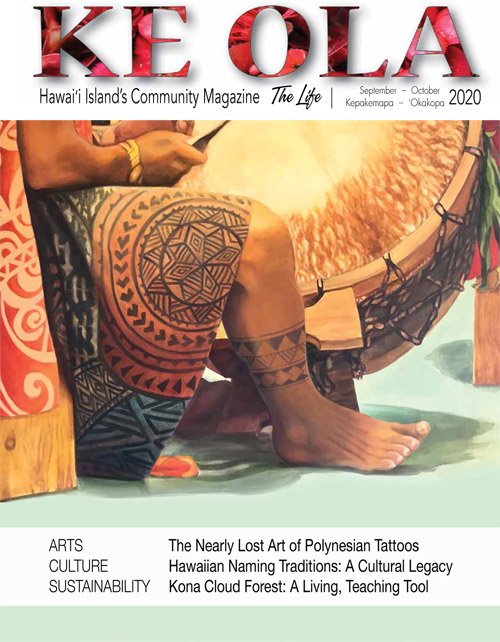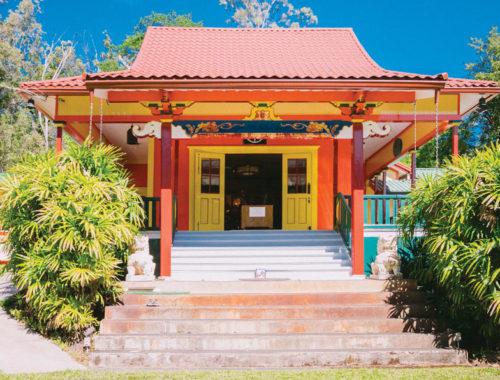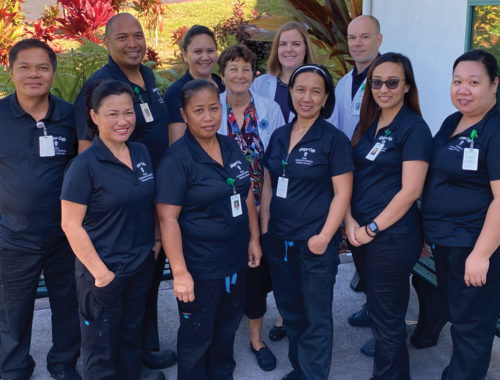Managing with Aloha: A Language of Intention: Our “Language of We”
Series 3 on Managing with Aloha, Bringing Hawai‘i’s Universal Values to the Art of Business. Sixth in Series Three on Managing with Aloha
By Rosa Say
Language of Intention is Key Concept 5 in a Managing with Aloha practice, wherein we communicate with our “Language of We.” Every business understands the importance of communication: it must be purposeful and intentional, and harnessed as the extraordinary tool it can be.
Language, vocabulary, and conversation combine as our primary tools in business communications, just as they do in our lives: what we speak is exponentially more important than what we read or write, because people are naturally more attuned to sound than sight as a matter of immediacy and reliability. Hand someone a set of instructions, and they will invariably say, “Can you just explain it to me, please?” appreciating that you may have experience to draw from, and can respond to any questions they may have.
The need for clear, intentional, reliable and responsive communication is critical in thriving businesses—and if our business is to be a learning culture—for we learn an extraordinary amount from other people.
Language is also assertive, confidant, and directional. Drive communication of the right cultural messages, and you drive mission momentum and worthwhile energies. Clarity saves time, and lessening misunderstanding tends to curb mistakes.
The Managing with Aloha Language of Intention is inclusive, and is therefore defined as the “Language of We” with the value of Kākou as guiding light: Kākou is the Hawaiian value of inclusiveness. It means “all of us” and “we are in this together.” Kākou is very unifying when applied to language, and when all within a company are taught to learn, speak, and practice “the language of we” as their dialect in business.
This conveys our desire for a transparency to what we say, where there aren’t hidden meanings, or a different way of speaking depending on whom your audience is, whether staff, customer or community—it’s always the same, for it is consistently authentic.
Our Language of Intention will therefore assure we speak with Aloha.
Communication will factor into every single value within our 19 Values of Aloha in some way as its primary enabler. It will therefore help us to act with Aloha as well: we will walk our talk!
To help managers be more conscious of the effects language has upon workplace culture, we teach them an awareness based on these linguistic definitions:
- VOCABULARY: Word candy! As our chosen, and commonly-used cultural definitions, vocabulary is the single most underutilized tool in all workplaces, bar none.
- LEXICON: The vocabulary of a person, language, or branch of knowledge. Our vocabulary is cobbled together to create our language, and our resulting dialect is often a mix of language forms and sources. What you inherit from your community, in the form of your people, must reach a pleasing yet purposeful blend in your workplace.
- DIALECT: A particular form of a language that is peculiar to a specific region or social group. In Managing with Aloha, we often speak of how our workplace dialects are influenced by Sense of Place, by Alaka‘i management and leadership direction and example, and most importantly, by our values. We must act according to what we say we believe in.
- MORPHOLOGY: In linguistics (which is the scientific study of language and its structure), morphology is the study of the forms of words and phrases. How did they come to be used, and why? Why are they still so effective, i.e., why do native speakers and writers like them? From the perspective of workplace culture, this helps us understand workplace history and any “insiders’ language” which exists, and intentionally decide when and how we will perpetuate it, or change it.
- WORKPLACE: Define workplace for your industry. Whether employed or self-employed, online and virtual or brick and mortar, local or global, learning path or career path, make it specific and purposeful in its importance and worth. In Managing with Aloha it’s the collection of those places we deliberately work on and within our Ho‘ohana—our intention with worthwhile work.
When all these components enhance a business culture with clarity and intention, it becomes a Language of Intention, and Kākou—your Language of We
The Language of We stimulates ownership and personal responsibility in the all-encompassing initiatives of a company. If you hear your employees talk about “our company” versus “the company” you know you’re on the right track. They feel they have a stake in what you do, and they take actions they believe are important and worthwhile. They are your partners, and these words of inclusiveness imply that they feel their voices and opinions are considered carefully in the decisions you make. The Language of We is one of collaboration and partnership, and it also implies agreement and support of your vision. These are the words, the empowering force, and the strength of mind of Kākou. All of us.❖
Language of Intention is Key Concept 5 in the Managing with Aloha philosophy: we explore our voice, and determine how we intentionally communicate. Next issue, we’ll talk about Key Concept 6: The ‘Ohana in Business Model.
Contact writer Rosa Say at RosaSay.com or ManagingWithAloha.com



